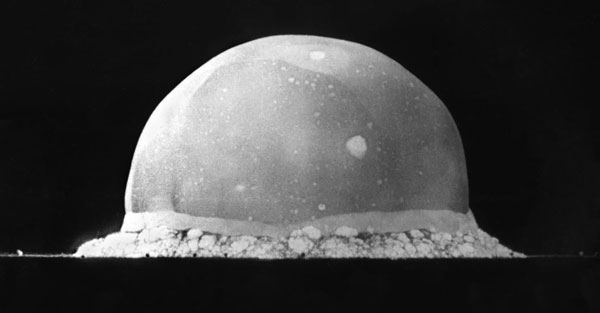The Trinity explosion, 16 ms after detonation. The viewed hemisphere’s highest point in this image is about 200 metres (660 ft) high.
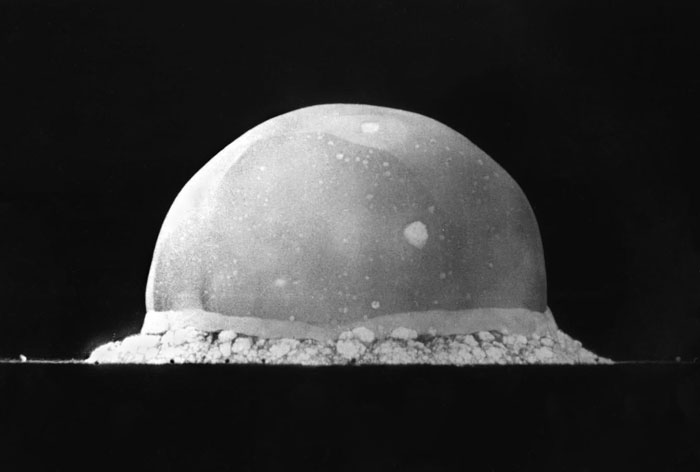
Photo credit: Los Alamos National Laboratory
On July 16, 1945, the United States became the first country in history to successfully detonate an atomic weapon. A new era in warfare and global political power and influence begun. When the U.S. government authorized a top-secret program in early 1940s, codenamed “The Manhattan Project”, its main goal was to develop the world’s first atomic bomb.
The main location of the secretive research and development was conducted in Los Alamos, New Mexico. In July 1945, the scientists led by J. Robert Oppenheimer successfully exploded the first atomic bomb at the Trinity test site, located in nearby Alamogordo.
J. Robert Oppenheimer was the wartime head of the Los Alamos Laboratory and is among those who are credited with being the “father of the atomic bomb”. The assigned the code name “Trinity” as inspired by the poetry of John Donne. The test was of an implosion-design plutonium device, informally nicknamed “The Gadget”, of the same design as the Fat Man bomb later detonated over Nagasaki, Japan, on August 9, 1945.
Exposed wiring of “The Gadget,” the nuclear device that exploded as part of Trinity, the first test of an atomic bomb. At the time of this photo, the device was being prepared for its detonation, which took place on July 16, 1945.
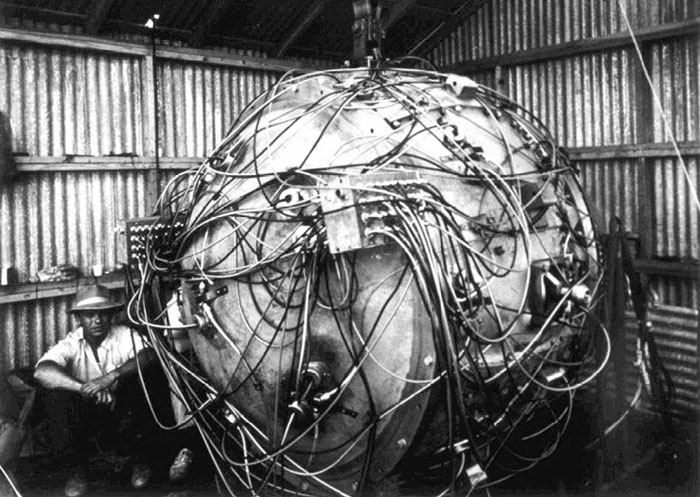
Photo credit: Los Alamos National Laboratory
The complexity of the design (as you can see above) required a gargantuan effort from the Los Alamos scientists. They were very much concerned about whether it would really work. This led them to the decision to conduct the first nuclear test.
Everyone involved in the top secret project was completely unsure what would happen next. There was worry that the chain reaction when the Gadget went off would be unstoppable and result to a major catastrophe.
One of the physicists Enrico Fermi took bets from fellow physicists and high ranking military officers on whether the bomb would destroy the whole state of New Mexico, or the entire planet.
Enrico Fermi was an Italian-American physicist and the creator of the world’s first nuclear reactor, the Chicago Pile-1. He has been called the “architect of the nuclear age” and the “architect of the atomic bomb”.
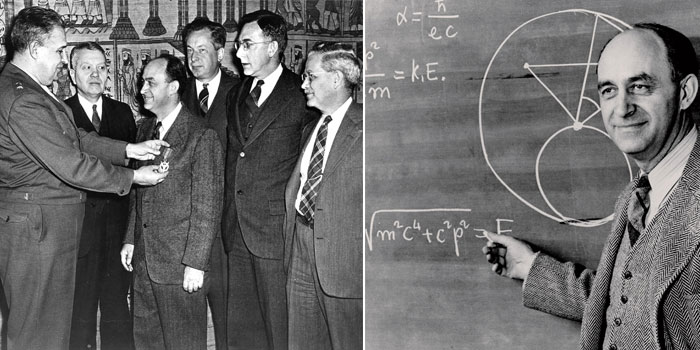
The gadget was hoisted atop a simulator — a 100-foot tower for detonation in order to better simulate a bomb being dropped from a plane. When it exploded at 5:29am, the mushroom cloud plumed to over 7 miles high.
About 240 people who witness the blast reported the early morning dawn being lit up brighter than full daylight for 1-2 seconds and felt a wave of heat roll over them that was “as hot as an oven”, even at a distance of 10 miles away.
The evolution of the Trinity fireball over the first 9 seconds, with the Empire State Building for scale. Image by Alex Wellerstein.
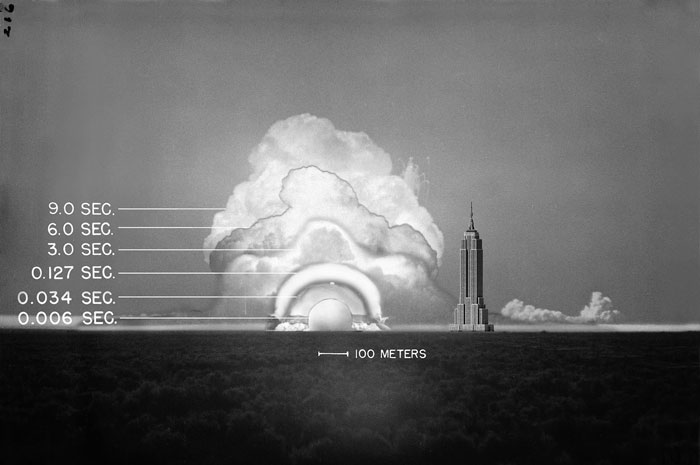
Photo credit: Los Alamos National Laboratory
The shock wave took 40 seconds to propagate to the observers and was felt up to 100 miles away. With a power equivalent to around 21,000 tons of TNT, the bomb completely obliterated the steel tower on which it rested. The history of the Nuclear Age had begun.
Oppenheimer later said the famous line after the world’s first nuclear test: “Now I am become Death, the destroyer of worlds”, a quote from the Bhagavad Gita.
Trinity crater.
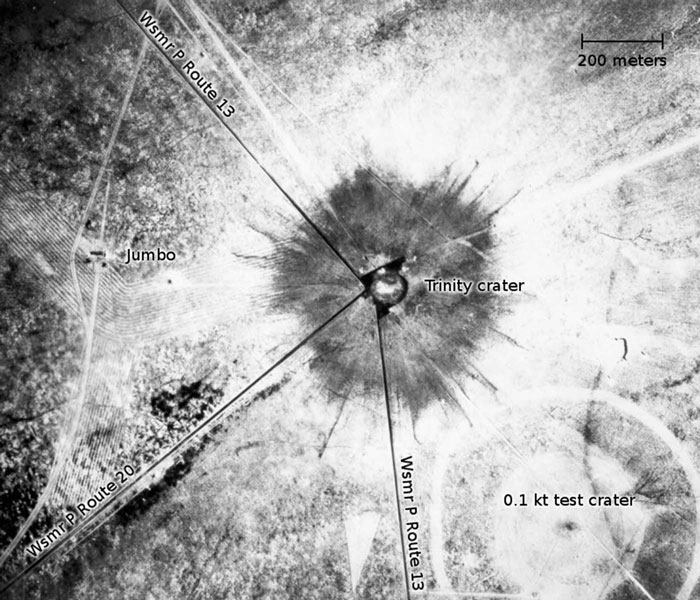
Photo credit: Los Alamos National Laboratory
Three weeks after the success of the Trinity test and seeing its destructive possibilities, the United States of America dropped the first atomic bomb (Little Boy) on Hiroshima, Japan. The second atomic bomb (Fat Man) was dropped next on Nagasaki, three days later.

